|
|
Post by Arjan Hut on Mar 23, 2020 8:58:54 GMT -5
327 Antulio Ramirez Ortiz' Osvaldo-Kennedy file
See also:74 Julio Fernandez' Oswald recordings and photos185 The original Pedro Gutierrez Valencia HSCA-interview tape216 Mary's Box of 33 docs linking Oswald-Ruby-CastroStories [of a Communist Conspiracy] include a report of a delayed Cubana airlines flight on November 22 with a mysterious passenger who rode in the cockpit, the strange travels of Gilberto Policarpo Lopez, and hijacker Antulio Ramirez Ortiz' allegations of having seen an Osvaldo-Kennedy file in Cuban intelligence files. Ramirez's story appears in the 2006 German documentary Rendezvous with Death by Wilfried Huismann and Gus Russo, which posits a Cuban conspiracy to kill JFK. (Mary Ferrell Foundation, Stories of Communist Conspiracy in Mexico City) 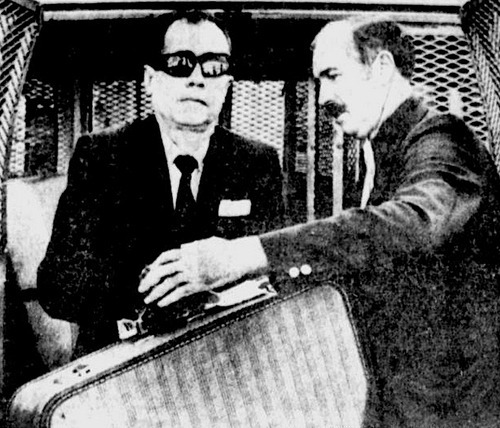 Antulio Ramirez OrtizOn May 1, 1961, Puerto Rican born Antulio Ramirez Ortiz, a 35-year-old American citizen, locked himself in a forward bathroom compartment of National Airlines Flight 337, bound for Key West from Miami, Florida. He passed a note under the compartment door, claiming that he had a bomb sufficient to destroy the aircraft. Ortiz demanded that the plane be flown to Havana, Cuba. Antulio Ramirez OrtizOn May 1, 1961, Puerto Rican born Antulio Ramirez Ortiz, a 35-year-old American citizen, locked himself in a forward bathroom compartment of National Airlines Flight 337, bound for Key West from Miami, Florida. He passed a note under the compartment door, claiming that he had a bomb sufficient to destroy the aircraft. Ortiz demanded that the plane be flown to Havana, Cuba.
The National Airlines pilot and crew complied with the threat. The plane was diverted to Havana where Ortiz disembarked without incident. The aircraft then returned to Key West. No one was physically injured and Ortiz was granted immediate asylum by the Cuban government.
Ortiz would ultimately be the subject of prosecution both in Cuba, when he attempted to leave that country in 1962, as well as in the United States, when he returned in 1975.
("U.S. Plane Seized, Flown to Havana")
Ortiz was initially granted political asylum in Cuba. However, after the Cuban Missile Crisis of 1962, he soured on Fidel Castro. He tried to escape the country and was imprisoned for six years. He finally managed to return to the United States via Jamaica in 1975. The following year, he was sentenced to 20 years in prison. While serving his sentence, he was interviewed by Congressional investigators who were looking into the assassination of President John F. Kennedy; Ortiz claimed that he had briefly worked for Cuba’s secret police during his time in exile, and had information that Lee Harvey Oswald was a Cuban agent.
( Skyjacker of the Day on Tumblr) In Rendezvous mit dem Tod wordt Antulio Ramírez opgevoerd. Hij stapte in 1961 in Miami op een vliegtuig, kaapte het toestel en bracht het naar Cuba. Volgens Huismann werd hij in Cuba als een held vereerd. Ramírez beweert dat de Cubanen hem dankbaar waren voor het vliegtuig dat hij had meegebracht
hoewel het toestel al enkele uren na aankomst in Cuba werd vrijgegeven en naar de VS terugkeerde.(4) De Cubanen vertrouwden Ramírez volledig, en hij werd een Cubaans geheimagent, zo wil Rendezvous mit dem Tod de kijker doen geloven. Sinds 1975 woont hij terug in de VS, waar Huismann met hem sprak. Officieren van de Cubaanse geheime dienst G2 vertelden Ramírez dat ze Kennedy wilden elimineren, zo zegt hij in het interview. Hij kreeg in de G2-lokalen in Havana ook een dossier Oswald-Kennedy in handen, en kon enkele documenten inkijken. Daarin staat dat de KGB Oswald bij de Cubanen heeft aanbevolen, zij het met reserves: Oswald is volgens de KGB een emotionele avonturier.
Antulio Ramírez is brought up in Rendezvous mit dem Tod. He got on a plane in Miami in 1961, hijacked the plane and brought it to Cuba. According to Huismann, he was revered as a hero in Cuba. Ramírez claims that the Cubans were grateful for the plane he brought with him… although the plane was released several hours after arriving in Cuba and returned to the US. The Cubans trusted Ramírez completely, and he became a Cuban secret agent, so Rendezvous mit dem Tod wants to make the viewer believe. Since 1975 he lives in the US, where Huismann spoke to him. Officers of the Cuban intelligence agency G2 told Ramírez that they wanted to "eliminate Kennedy," he said in the interview. He also received a file 'Oswald-Kennedy' at the G2 premises in Havana, and was able to view 'some documents'. It states that the KGB recommended Oswald to the Cubans, albeit with reservations: Oswald is "an emotional adventurer," according to the KGB.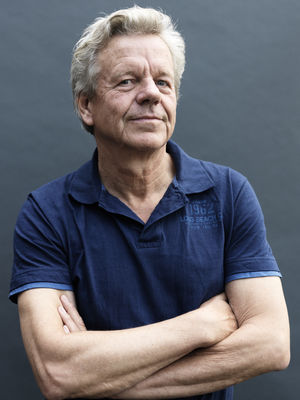 Wilfried Huismann (b. 1951) Commentaar. Het is vreemd dat Ramírez, die uit de VS kwam en in Cuba wantrouwen moest wekken, toegang heeft gekregen tot zon explosief dossier, dat ook nog de onthullende titel Oswald-Kennedy had
Onze scepsis wordt versterkt als Ramírez in de documentaire uit zn dagboek begint voor te lezen. Het is een tekst die is uitgeschreven op A4-bladzijden die er als nieuw uitzien. De tekst bestaat uit volzinnen, zonder doorhalingen
alsof het om een af verhaal gaat dat voor publicatie is bestemd. Een halve bladzijde komt goed in beeld, met een uittreksel uit een van de G2-documenten die Ramírez zou hebben geraadpleegd: La KGB (policía secreta rusa) nos recomienda enzovoorts. Zou een Cubaans geheimagent in een G2-document naast het acroniem ook de volledige naam van de zusterorganisatie uit de Sovjetunie noteren? Dit stinkt naar een vervalsing
Comment. It is strange that Ramírez, who came from the US and would have aroused suspicion in Cuba, had access to such an explosive file, which also had the revealing title "Oswald-Kennedy" ... Our skepticism is enforced as Ramírez in the documentary begins to read from his diary. It is a text written on A4 pages that look like they are new. The text consists of full sentences, without deletions ... as if it were an 'finished' story intended for publication. A half page is well illustrated, with an extract from one of the G2 documents that Ramírez is alleged to have consulted: "La KGB (policía secreta rusa) nos recomienda" and so on. In addition to the acronym, would a Cuban secret agent write down the full name of the Soviet Union sister organization in a G2 document? This reeks of falsification.In een rapport van het Amerikaanse Congres (House Select Committee on Assassinations of HSCA, 1979) wordt het verhaal van Ramírez afgedaan als ongeloofwaardig, (...) elke bewering van hem die door andere geloofwaardige bronnen kon worden gecheckt, bleek vals te zijn.In a report by the United States Congress (House Select Committee on Assassinations of HSCA, 1979), Ramírez's story is dismissed as "implausible," ... every claim by him that could be checked with other credible sources was found to be false. Wilfried Huismann (b. 1951) Commentaar. Het is vreemd dat Ramírez, die uit de VS kwam en in Cuba wantrouwen moest wekken, toegang heeft gekregen tot zon explosief dossier, dat ook nog de onthullende titel Oswald-Kennedy had
Onze scepsis wordt versterkt als Ramírez in de documentaire uit zn dagboek begint voor te lezen. Het is een tekst die is uitgeschreven op A4-bladzijden die er als nieuw uitzien. De tekst bestaat uit volzinnen, zonder doorhalingen
alsof het om een af verhaal gaat dat voor publicatie is bestemd. Een halve bladzijde komt goed in beeld, met een uittreksel uit een van de G2-documenten die Ramírez zou hebben geraadpleegd: La KGB (policía secreta rusa) nos recomienda enzovoorts. Zou een Cubaans geheimagent in een G2-document naast het acroniem ook de volledige naam van de zusterorganisatie uit de Sovjetunie noteren? Dit stinkt naar een vervalsing
Comment. It is strange that Ramírez, who came from the US and would have aroused suspicion in Cuba, had access to such an explosive file, which also had the revealing title "Oswald-Kennedy" ... Our skepticism is enforced as Ramírez in the documentary begins to read from his diary. It is a text written on A4 pages that look like they are new. The text consists of full sentences, without deletions ... as if it were an 'finished' story intended for publication. A half page is well illustrated, with an extract from one of the G2 documents that Ramírez is alleged to have consulted: "La KGB (policía secreta rusa) nos recomienda" and so on. In addition to the acronym, would a Cuban secret agent write down the full name of the Soviet Union sister organization in a G2 document? This reeks of falsification.In een rapport van het Amerikaanse Congres (House Select Committee on Assassinations of HSCA, 1979) wordt het verhaal van Ramírez afgedaan als ongeloofwaardig, (...) elke bewering van hem die door andere geloofwaardige bronnen kon worden gecheckt, bleek vals te zijn.In a report by the United States Congress (House Select Committee on Assassinations of HSCA, 1979), Ramírez's story is dismissed as "implausible," ... every claim by him that could be checked with other credible sources was found to be false.(Ludo de Witte, Betaalde Castro de moord op Kennedy?)
|
|
|
|
Post by Arjan Hut on Mar 25, 2020 13:40:25 GMT -5
328 Oval Office tapes from October 9 – November 21, 1963See also:Thread: About Robert White, Chris Fulton & The InheritanceAs a young schoolboy, [Robert] White had written to President Kennedy early in his administration asking for an autographed photo of the President, which Mrs. Lincoln sent him, beginning a correspondence that continued until she died. As an avid collector of Kennedy memorabilia, White legally inherited whatever Mrs. Lincoln had when she died, which included most of what was in the Oval Office – the cigar box, a rocking chair, top secret documents, photos from the walls, and most significantly the Oval Office dictabelt and recordings, even though the items were the personal property of the Kennedy family and didn't belong to Mrs. Lincoln. (...) When White needed money, he began to sell of certain items, including the wrist watch JFK was wearing when he was killed and six cassette tapes, copies of the dictabelt recordings made by White and sold to one Christopher Fulton, a building contractor.
When White died at a relatively early age, his collection was put up for auction in New York City, where many items were successfully contested by the Kennedy family. Meanwhile Fulton was arrested for bank fraud, and served time in prison.When he was released he wrote a book that falsely intimidated that he was imprisoned because of his ownership of the JFK watch, that he met with agent Bouck and sold the watch to JFK, Jr. In his book Fulton quotes some of the Oval Office tapes that clearly indicate their value to historians. When I asked Fulton and his publisher what became of the six cassettes of copies of the Oval Office tapes, they refused to answer me (...). From the National Archives in Washington and the JFK Library in Boston I learned that they had a protracted legal battle with Robert White and the Assassination Records Review Board (ARRB) attempts to retrieve sensitive documents and the tapes, the result of which is still a mystery to me. I did learn that the JFK Library collection of Oval Office tapes available to the public on line end on October 8, 1963, so the recording made from then until the day JFK left for Texas are missing. ( Bill Kelly, JFK Countercoup, Friday, March 20, 2020)
|
|
|
|
Post by Arjan Hut on Mar 26, 2020 11:28:02 GMT -5
329 Who was the Secret Service agent in the parking lot?
See also:
318 “Knoll shooter” crime scene photographs & possible physical evidence 321 The identity of the parking lot police officer "He showed me that he was a Secret Service agent."
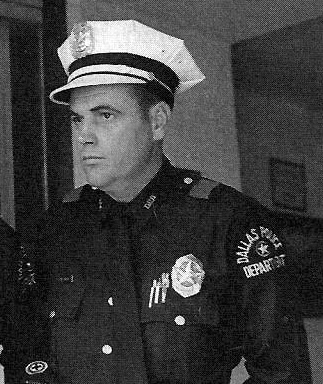 Joe Smith (1932-1983) Joe Smith (1932-1983)
Mr. SMITH. I started up toward this Book Depository after I heard the shots, and I didn't know where the shots came from. I had no idea, because it was such a ricochet. Mr. LIEBELER. An echo effect? Mr. SMITH. Yes, sir.; and this woman came up to me and she was just in hysterics. She told me, "They are shooting the President from the bushes." So I immediately proceeded up here. Mr. LIEBELER. You proceeded up to an area immediately behind the concrete structure here that is described by Elm Street and the street that runs immediately in front of the Texas School Book Depository, is that right? Mr. SMITH. I was checking all the bushes and I checked all the cars in the parking lot. Mr. LIEBELER. There is a parking lot in behind this grassy area back from Elm Street toward the railroad tracks, and you went down to the parking lot and looked around? Mr. SMITH. Yes, sir; I checked all the cars. I looked into all the cars and checked around the bushes. Of course, I wasn't alone. There was some deputy sheriff with me, and I believe one Secret Service man when I got there. I got to make this statement, too. I felt awfully silly, but after the shot and this woman, I pulled my pistol from my holster, and I thought, this is silly, I don't know who I am looking for, and I put it back. Just as I did, he showed me that he was a Secret Service agent. Mr. LIEBELER. Did you accost this man? Mr. SMITH. Well, he saw me coming with my pistol and right away he showed me who he was. Mr. LIEBELER. Do you remember who it was? Mr. SMITH. No, sir; I don't--because then we started checking the cars. In fact, I was checking the bushes, and I went through the cars, and I started over here in this particular section. Mr. LIEBELER. Down toward the railroad tracks where they go over the triple underpass? Mr. SMITH. Yes. ( The testimony of Joe Marshall Smith, July 23, 1964, Dallas Post Office building)  Pic: Wilma Bond Pic: Wilma BondMr. WEITZMAN - I immediately ran toward the President's car. Of course, it was speeding away and somebody said the shots or the firecrackers, whatever it was at that time, we still didn't know the President was shot, came from the wall. I immediately scaled that wall. Mr. BALL - What is the location of that wall? Mr. WEITZMAN - It would be between the railroad overpass and I can't remember the name of that little street that runs off Elm; it's cater-corner--the section there between the--what do you call it--the monument section? Mr. BALL - That's where Elm actually dead ends? Mr. WEITZMAN - Yes, sir; I scaled the wall and, apparently, my hands grabbed steampipes. I burned them. Mr. BALL - Did you go into the railroad yards? Mr. WEITZMAN - Yes, sir. Mr. BALL - What did you notice in the railroad yards? Mr. WEITZMAN - We noticed numerous kinds of footprints that did not make sense because they were going different directions. Mr. BALL - Were there other people there besides you? Mr. WEITZMAN - Yes, sir; other officers, Secret Service as well, and somebody started, there was something red in the street and I went back over the wall and somebody brought me a piece of what he thought to be a firecracker and it turned out to be, I believe, I wouldn't quote this, but I turned it over to one of the Secret Service men and I told them it should go to the lab because it looked to me like human bone. I later found out it was supposedly a portion of the President's skull. ( The testimony of Seymour Weitzman, April 1, 1964, Dallas Post Office Building) Michael T. Griffiths discusses the mystery agent and the explanation offered by protectors of the fairytale in this 1996 article: THE MAN WHO WASN'T THERE, WAS THERE
|
|
|
|
Post by Arjan Hut on Mar 28, 2020 13:47:48 GMT -5
330 Contemporary FBI investigation of "Chicago group"
See also:
2 Protection survey reports for President Kennedy’s trips in the fall of 196362 FBI Agent John L. Quigley's interrogation notes 90 ATF Files on Masen/Nonte case 201 Over half of the Doyle film 203 New Orleans FBI security file on Oswald On November 21, 1963, a government informant named Thomas Mosley was negotiating the sale of machine guns to a Cuban exile named Echevarria. In the course of the transaction, Echevarria said that "we now have plenty of money - our new backers are Jews" and would close the arms deal "as soon as we [or they] take care of Kennedy." The next day, Kennedy was assassinated in Dallas. Mosley, an ATF informant, reported his conversation to the Secret Service, and that agency quickly began investigating what it termed "a group in the Chicago area who may have a connection with the JFK assassination." Echevarria was a member of the 30th November group, associated with the DRE with whom Oswald had dealings the previous summer. Mosley said the arms deal was being financed through Paulino Sierra Martinez and his J.G.C.E.--Sierra interestingly was connected to Bobby Kennedy's effort to unite various exile groups, through Harry Ruiz Williams. The Secret Service investigation was soon taken over by the FBI. The FBI quickly dropped the case, leaving this explosive statement unresolved. The Warren Commission received the Secret Service reports but did not direct the FBI to take any action in the matter. Worth noting is that in 1995, the Secret Service destroyed presidential protection survey reports for some of Kennedy's trips during the fall of 1963, including the cancelled Chicago trip planned for the beginning of November. ( Mary Ferrell Foundation) 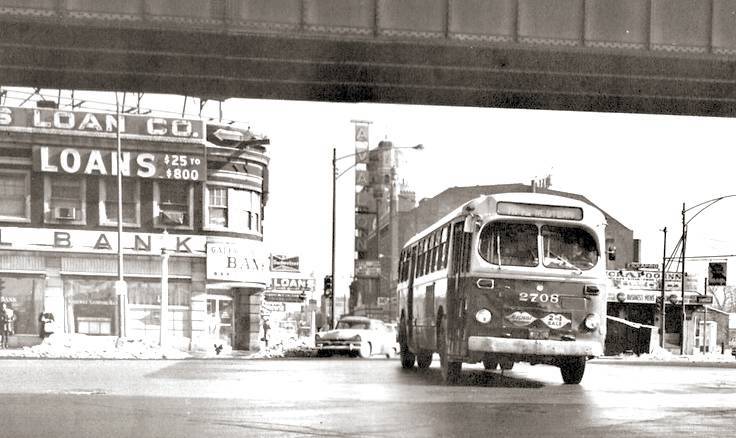 Homerio Echevarria (32) was a bus driver in Chicago in 1963 Homerio Echevarria (32) was a bus driver in Chicago in 1963Homer S. Echevarria - For the most part the committee found that the anti-Castro Cuban leaders were more vociferous than potentially violent in their tirades against the President. Nevertheless, it was unable to conclude with certainty that all of the threats were benign. For example, one that the committee found particularly disturbing -especially so, since it was not thoroughly looked into in the 1963- 64 investigation- came to the attention of the Secret Service within days of the President's death, prompting the Acting Special Agent-in- Charge of the Chicago field office to write an urgent memorandum indicating he had received reliable information of "a group in the Chicago area who [sic] may have a connection with the J. F. K. assassination." The memorandum was based on a tip from an informant who reported a conversation on November 21, 1963, with a Cuban activist named Homer S. Echevarria. They were discussing an illegal arms sale, and Echevarria was quoted as saying his group now had "plenty of money" and that his backers would proceed "as soon as we take care of Kennedy." Following the initial memorandum, the Secret Service instructed its informant to continue his association with Echevarria and notified the Chicago FBI field office. It learned that Echevarria might have been a member of the 30th of November anti-Castro organization, that he was associated with Juan Francisco Blanco-Fernandez, military director of the DRE, and that the arms deal was being financed through one Paulino Sierra Martinez by hoodlum elements in Chicago and elsewhere. Although the Secret Service recommended further investigation, the FBI Initially took the position that the Echevarria case "was primarily a protection matter and that the continued investigation would be left to the U.S. Secret Service," and that the Cuban group in question was probably not involved in illegal activities. The Secret Service initially was reluctant to accept this position, since it had developed evidence that illegal acts were, in fact, involved. Then, on November 29, 1963, President Johnson created the Warren Commission and gave the FBI primary investigative responsibility in the assassination. Based on its initial understanding that the President's order meant primary, not exclusive, investigative responsibility,the Secret Service continued its efforts; but when the FBI made clear that it wanted the Secret Service to terminate its investigation, it did so, turning over its files to the FBI. The FBI, in turn, did not pursue the Echevarria case. While it was unable to substantiate the content of the informant's alleged conversations with Echevarria or any connection to the events, in Dallas, the committee did establish that the original judgment of the Secret Service was correct, that the Echevarria case did warrant a thorough investigation. It found, for example, that the 30th of November group was backed financially by the Junta del Gobierno en de Cuba el Exllio (JGCE), a Chicago-based organization run by Paulino Sierra Martinez. JGCE was a coalition of many of the more active anti-Castro groups that had been founded in April 1963 ; it was dissolved soon after the assassination." Its purpose was to back the activities of the more militant groups, including Alpha 66 and the Student Directorate, or DRE, both of which had reportedly been in contact with Lee Harvey Oswald. Much of JGCE's financial support, moreover, allegedly came from individuals connected to organized crime. ( HSCA Final Report 1C Conspiracy, p. 133-4)
|
|
|
|
Post by Arjan Hut on Mar 30, 2020 12:16:29 GMT -5
331 Six page 22-11-1963 longhand letter containing testimony of Victoria Adams
While she was standing in front of the Depository, observing all that was happening around her in the early moments following the assassination, Ms. Adams said she heard a police broadcast coming from a motorcycle parked nearby. I pressed her for more details about the nature of what she overheard. "The only thing I remember about that was the fear it produced - that I might be implicated in some way. I do not recall what was said." Even though she couldn't recollect the exact words, the "fear it produced" is consistent with what she told the Warren Commission she had heard: a police broadcast indicating the shots may have been originated from the fourth floor, the very floor where Ms. Adams. "Sandra [Styles] went back inside. I didn't care if I would be fired. I needed to know what was happening." Only after satisfying her curiosity a bit longer did Ms. Adams return to the building, taking the front elevator to her office and her desk. She was sent home not long after being questioned by "several men." By then it was shortly after 2 P.M. "One of the things I did immediately after I got home," she continued, "was write a longhand, six-page letter to John O'Connor, who was the editor of The Monitor, a San Francisco Catholic newspaper. I detailed my moves and exactly what I did that day and especially what I witnessed. John never received that letter and I don't know what actually happened to it. (...) Ms. Adams did not keep a copy of the letter for herself. She was at the time, she admitted, still 'young and naïve." "I suspect it was taken by someone in Dallas after I mailed it, but have no proof of that." (Barry Ernest, The Girl on the Stairs, hardcover edition, p. 245-6) 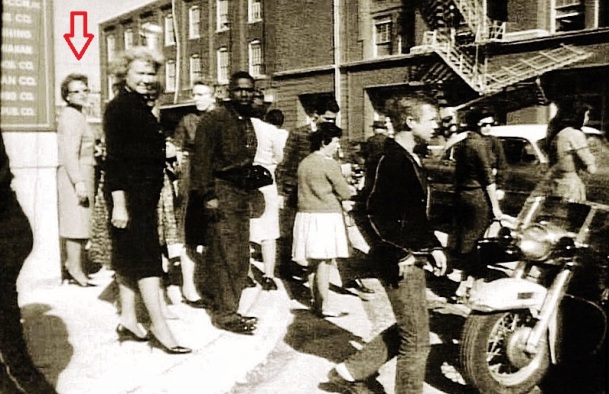 Victoria Adams? (find by Linda Giovanna Zambanini) Mrs. George Andrew Kounas (Dolores Arlene), a TSBD worker, says Dennis Moricet. Victoria Adams? (find by Linda Giovanna Zambanini) Mrs. George Andrew Kounas (Dolores Arlene), a TSBD worker, says Dennis Moricet. On November 22, 1963, a young Victoria Elizabeth Adams stood behind a fourth-floor window of the Texas School Book Depository in Dallas. She watched as John Kennedy was murdered in the streets below. Then, with a co-worker in tow, she ran down the back stairs of the building in order to get outside and determine what had happened. At that precise moment, her life changed forever. Her actions posed serious problems for the Warren Commission, already grappling with its agenda of naming Lee Harvey Oswald as the lone assassin. If Miss Adams was telling the truth, then she had descended those stairs at the same time Oswald would have been on them as he made his escape from the sixth floor sniper's nest. Yet Miss Adams saw no one. And even though the stairs were old, wooden, and creaky under any weight, she heard no one either. When Miss Adams was called to testify before a Commission attorney, she was quickly discredited, humiliated, and eventually branded a liar. ( Google books review, 2011)
|
|
|
|
Post by Arjan Hut on Mar 31, 2020 7:35:38 GMT -5
332 Report of Sandra Styles FBI-interview
Related:331 Six page 22-11-1963 longhand letter containing testimony of Victoria Adams[Sandra] Styles was not interviewed by the Warren Commission and her November FBI-interview disappeared and she never testified. (Richard Gillbride, Matrix for assassination, p. 235)  Sandra Styles, 1962 Sandra Styles, 1962Victoria Adams, the notable "girl on the stairs." She was an employee who worked in the same building as one Lee Harvey Oswald. The problem caused by her presence is very simple and easily summarized. Adams, along with her friend Sandra Styles, stood on the fourth floor of the Texas School Book Depository at the moment of the murder. She testified to hearing three shots, which from her vantage point appeared to be coming from the right of the building (i.e., from the grassy knoll). She and Styles then ran to the stairs to head down. This was the only set of stairs that went all the way to the top of the building. Both she and her friend took them down to the ground floor. She did not see or hear Oswald. Yet, she should have if he were on the sixth floor traveling downwards. Which is what the Commission said he did after he shot Kennedy. (...)  Styles and Adams as portrayed in JFK (1991) Styles and Adams as portrayed in JFK (1991)Beginning to master the Internet, Barry [Ernest] then finds Sandra Styles. (p. 217) She confirms Adams. She says the two left the window when Secret Service agent Clint Hill jumped on the back of the car. (p. 218) And she said she neither saw nor heard anyone on the stairs on the way down. And she did not recall Lovelady or Shelley on the ground floor when they got there either. (p. 219) Styles said the only interview she gave was to the FBI and it was not in depth or probing. ( Joseph Green, review of The Girl on the Stairs, KennedysandKing)
|
|
|
|
Post by Arjan Hut on Apr 1, 2020 10:23:40 GMT -5
333 Record of Warren Commission questioning of Dorothy Garner
Continued from:331 Six page 22-11-1963 longhand letter containing testimony of Victoria Adams 332 Report of Sandra Styles FBI-interview
Prior to publication of my book, "The Girl on the Stairs," in which I analyzed the story of Victoria Adams, I discovered in the National Archives a document out of Dallas that had not been made available otherwise. It was a June 2, 1964, transmittal letter from Martha Joe Stroud, assistant U.S. Attorney for the Northern District of Texas, and its recipient was J. Lee Rankin, general counsel to the Warren Commission. (See it below.)  The letter has since become known as "the Stroud document." Its contents concerned the testimony of Victoria Adams and how, on examination, Miss Adams had noticed several spelling and grammatical errors that she felt needed correction. None of those corrections were made in the final version, however. But the startling discovery came in the final paragraph of the letter, written almost as if it were an afterthought: "Mr. Bellin [sic] was questioning Miss Adams about whether or not she saw anyone as she was running down the stairs. Miss Garner, Miss Adams' supervisor, stated this morning that after Miss Adams went downstairs she (Miss Garner) saw Mr. Truly and the policeman come up." To anyone unfamiliar with the story of Victoria Adams, that last line would have meant little if anything. But suddenly, Dorothy Garner had taken on an extremely important role. (...) Like Sandra Styles, who also verified Miss Adams' timing of the descent in my personal interview with her, Dorothy Garner had been ignored by the Warren Commission. Or had she? Although no public record exists of an interview or conversation between Mrs. Garner and the Commission, apparently one did take place. Since I discovered the Stroud document I was always curious as to whom Mrs. Garner had made her statement. Was it David Belin, in charge of this area of the investigation? After all, he had been in Dallas not long before that taking depositions from other Depository employees. So I asked Mrs. Garner if she recalled someone from the Warren Commission talking with her. "Yes, I do remember that," she replied. According to her, the questioning occurred "several months later…quite a few months later," a time period which seemed to fit with the June date on the Stroud document. She could not remember who the man was.The name David Belin did not ring a bell. She also could not recall where the questioning had taken place or specifically what had been asked. She did say, however, that the conversation, which she admitted could even have been by telephone, was "brief." When I then asked if she was sure of the agency the questioner was from she replied firmly, "Yes." When I inquired how she could be so definite the person had been from the Commission, she answered, "He identified himself as being from the Warren Commission." (Barry Ernest, Another Ignored Witness Found, 2011)
|
|
|
|
Post by Arjan Hut on Apr 5, 2020 11:57:33 GMT -5
334 Examination of JFK's scalp
Related:286 Supplemental autopsy photographs of Kennedy's brainDr. Milton Helpern has stated that, if permitted to see the Kennedy autopsy X-rays, he would look for traces of metal indicating the presence of another head wound. Although he is not particularly sanguine about the possibility of finding such traces, he does not rule out the possibility that the Bethesda pathologists may have overlooked another entrance wound: "Often, quite often, wounds of entrance in the head are completely overlooked because they are covered naturally by the hair. The wound may barely bleed at all. If you don't take a comb and go over the entire scalp inch by inch, separating the hair carefully and meticulously, it's easy to miss a head wound entirely. There is no evidence that this type of examination was made." (Josiah Thompson, Six Seconds in Dallas, p. 108-9, 1967) 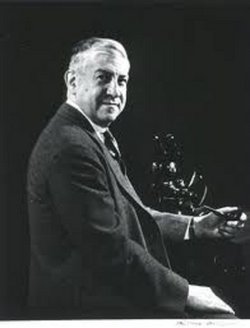 Milton Helpern (1902-1977), the greatest medical detective of his time Milton Helpern (1902-1977), the greatest medical detective of his time
|
|
|
|
Post by Arjan Hut on Apr 6, 2020 11:57:50 GMT -5
335 One additional autopsy face sheet
Erasing the Past...DiscussionsFurther reading:
40 The original autopsy notes by Commander James J. Humes41 The first draft of the autopsy rapport by commander James J. Humes42 Second version of the autopsy report predating the one in the National Archives43 Dr. Pierre Finck's handwritten notes taken during the JFK autopsy 334 Examination of JFK's scalpIt is unknown just when Commander Humes and his colleagues finished their deliberations. Commander Humes did testify that from the time of the completion of the examination until the submission of the final report following its preparation, all of the papers pertinent to this case were in my personal custody (2H373). Yet, to my amazement, I learned from Commander Boswell that there was an additional autopsy face sheet* (similar to CE 397 yet with additional information) that apparently disappeared somewhere between the autopsy examination room and the Commission's files. Humes had testified that on Sunday morning, November 24, he burned in his fireplace "a draft of this report which I later revised" (3H373).  Autopsy sheet that is part of CE397 Autopsy sheet that is part of CE397
It is unclear just what this earlier draft contained; one distinguished member of the Commission's staff told Life that he was "certain" Humes burned the original draft because it reflected a finding contrary to the official report. It is by no means certain that this is the case (the lawyer gave Life no indication why he was so sure), but if it does turn out to be so, then the missing autopsy face sheet may also have disappeared up the chimney of Commander Humes's suburban fireplace. Although the final disposition of this face sheet must remain in doubt, we do know that neither it nor Humes's original draft appears among the documents that finally found their way into the Commission's files. The working papers and the final autopsy report were turned over to Captain John H. Stover of the Naval Medical School on November 24. Stover had them transferred to Admiral Burkley at the White House, who turned them over to the Secret Service on November 26 (Archives, CD 371). Copies of these documents reached the Warren Commission and the FBI about a month later. When Arlen Specter came to work for the Commission in mid-January, both the typed official report and Humes's handwritten draft were on his desk 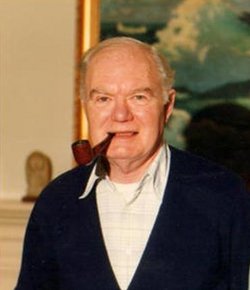 J. Thornton Boswell (1922-2010) J. Thornton Boswell (1922-2010)
* Boswell interview, Jan. 11, 1967. Commander Boswell remembered this face sheet when I pointed out that, although the location of the small head entry wound was given as "2.5 cm. to the right and slightly above the external occipital protuberance" in the official autopsy report, no indication of its location was given in the notes preserved in CE 397. He told me it was his recollection that the missing face sheet also contained additional information. (Thompson, Six seconds in Dallas, p. 201-2, 214) |
|
|
|
Post by Arjan Hut on Apr 9, 2020 3:43:42 GMT -5
336 Oswald's 11-22-1963 workshirt
See also:
166 The identity of the officer who found the Westbrook jacket 320 Jacket, cap, shoes & identity of 'marble works Lee Oswald' Mrs. Bledsoe went on to relate that she had notified the police on Friday evening that she had seen Oswald on the bus. The next night (Saturday) she had gone to the police headquarters where she had identified Oswald, not in a line-up but from photographs of him holding a gun. At some later time, Secret Service agents had come to her home, bringing a brown shirt which she had recognized, from the hole in the sleeve and the color, as the one Oswald had worn on the bus. (6H 412-413)  The shirt Oswald wore when arrested The shirt Oswald wore when arrestedThe record with respect to that shirt is somewhat unclear. When arrested, Oswald was wearing a shirt (CE 150) that corresponds generally with the shirt described and identified by Mrs. Bledsoe as the one he was wearing on the bus. But it is difficult to accept the identification as conclusive, because of Mrs. Bledsoe's obviously confused testimony; one cannot judge whether the shirt he wore when arrested (displayed to her on an unspecified date by the Secret Service) was one which she had previously seen. (6H 412-413) So far as is known, Oswald's shirt was intact until the scuffle in the Texas Theater which culminated in his arrest. If so, the fact that Mrs. Bledsoe saw the shirt already torn, an hour before the scuffle, would be an anachronism. (None of the witnesses who saw Oswald before the bus ride—Wesley Frazier, Officer Baker, and Roy Truly—suggested that his shirt was ripped or torn.) Moreover, Oswald told Captain Fritz that during his brief visit to his room he had changed his trousers and his shirt, "because they were dirty," and that he had placed them "in the lower drawer of his dresser." (WR 604-605, 622) The police officers who searched the room did not indicate on the police property list that discarded trousers and shirt were found there. The police did not volunteer information on that point and the Commission did not attempt to elicit such information. Nevertheless, the Commission asserts on the strength of Mrs. Bledsoe's testimony and the bus transfer found on Oswald that "although Oswald... claimed to have changed his shirt, the evidence indicates that he continued wearing the same shirt he was wearing all morning and which he was still wearing when arrested." (WR 124-125) (Sylvia Meagher, Accesories after the fact, p. 80, 1967)  Gladys Johnson, owner of the boarding house, in Oswald's room Gladys Johnson, owner of the boarding house, in Oswald's roomNote: Oswald himself claimed to have been wearing a "reddish colored, long sleeved shirt with button-down collar and gray colored pants" the day of the assassination. (CD5, p.100) At first, Oswald told the police he changed only his trousers, then later claimed to have changed his shirt as well, putting both dirty items in the "lower drawer of his dresser." Although, a police search of Oswald's room turned up two pairs of gray workpants (CE156, 157), a reddish colored shirt was not found. (CE2003, p. 285-86) Police did recover, however, only one "long sleeved, shirt with a button -down collar"(CE151) from Oswald's room. Reports describe it as either tan or light-brown in color. Whether this is the shirt Oswald claimed to be wearing is not known. (Dale Myers, With Malice, Chapter 10 footnotes, 2013)
|
|




















